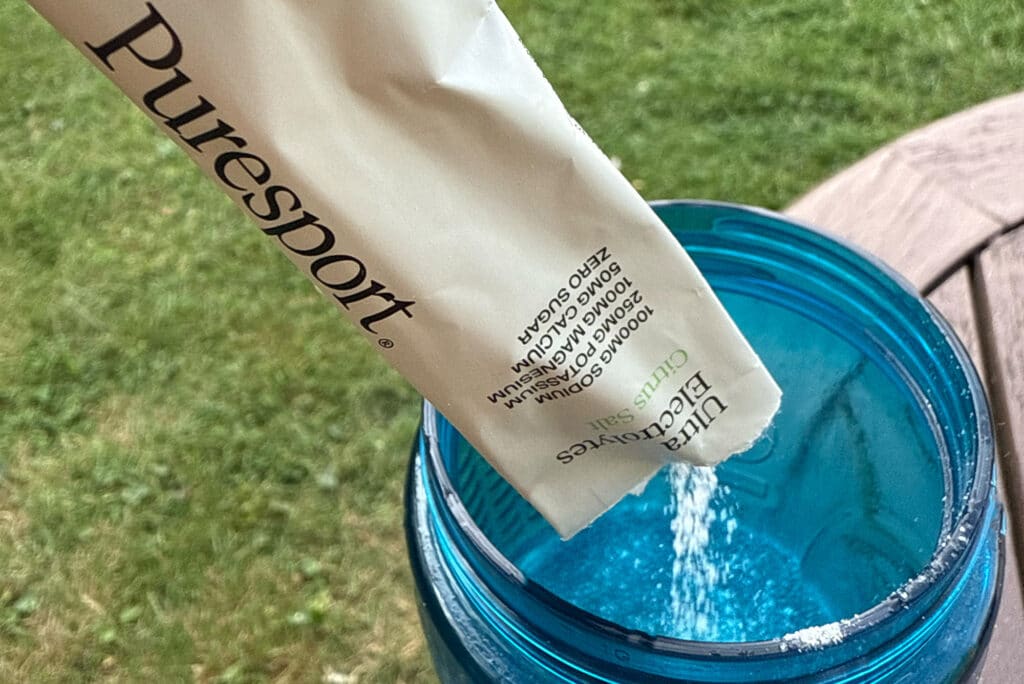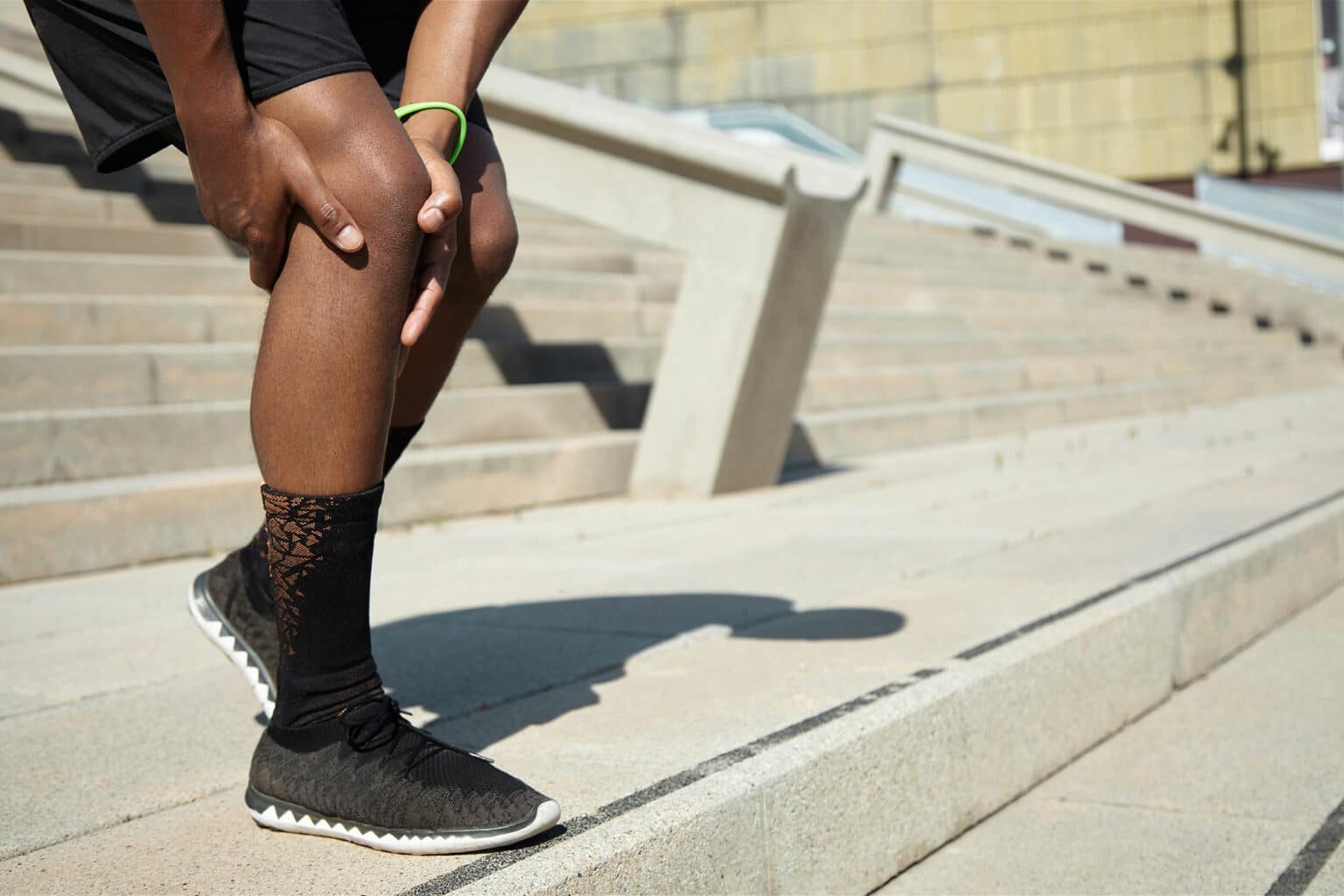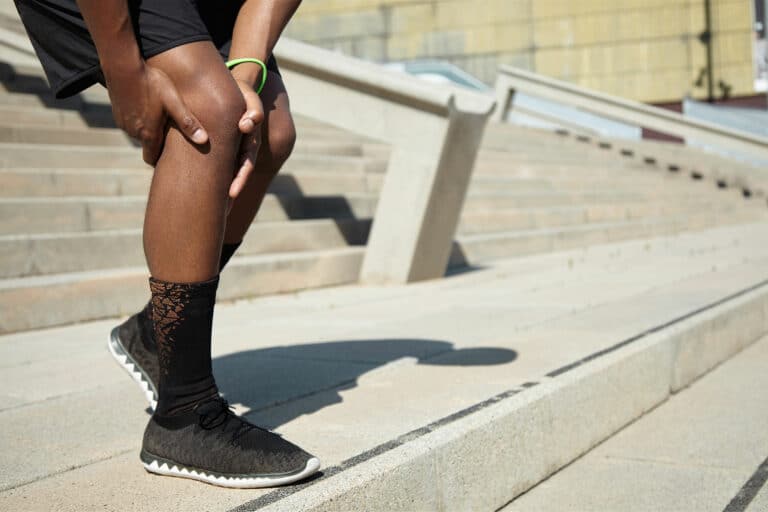


Patellar tendinopathy, or runner’s knee, is a source of anterior knee pain, characterised by pain localised to the inferior pole of the patella.
The inferior pole of the patella, also known as the lower pole, is the bottom part of the patella, or kneecap. This bony structure is crucial for the knee joint’s function as it interacts with other structures like tendons and ligaments.
The pain gets worse when you put weight on it and increases with activities that require your knee muscles, especially when energy is stored and released in the tendon just below your kneecap.
Tendinopathy is a general term that describes tendon degeneration characterised by pain, swelling, and impaired performance.
This condition is prevalent in people participating in activities demanding energy storage and release from the tendons.
Overuse and substantial increases in load are the primary causes of tendinopathy. However, additional risk factors increase the chances of experiencing tendinopathy. As you age, you become more susceptible to tendinopathy due to the reduced elasticity of your tendons.
Those with a high BMI (body mass index) are also more likely to suffer from tendinopathy as their increased body weight puts more strain on the tendons.
Other factors include reduced extensibility in the quadriceps and hamstring muscles, a more vertical ‘stiffer leg’ landing pattern, low arch height, and reduced ankle dorsiflexion.
Ankle dorsiflexion is the movement where the top part of the foot moves closer to the shin. It is crucial for daily activities like walking or running, allowing the knee to move over the foot while keeping the heel on the ground. Limited ankle dorsiflexion can alter gait mechanics, increasing injury risk. Maintaining good ankle dorsiflexion is important for mobility and joint health.
The wrong type of footwear can contribute to the development of runner’s knee. Running shoes that lack adequate cushioning may lead to increased impact forces transmitted up the leg, exacerbating stress on the patellar tendon. Furthermore, shoes that do not offer sufficient arch support can result in excessive pronation (inward rolling of the foot), which in turn puts additional stress on the tendons and ligaments of the knee.
Proper running shoes should be tailored to an individual’s foot type and gait. Those with low arches or flat feet often benefit from shoes with stability features, while those with high arches usually require shoes with more cushioning. In addition, it is important to regularly replace running shoes as worn-out shoes no longer provide the necessary support and cushioning.
To gauge when to replace running shoes, a common rule of thumb is to do so every 300-500 miles (480-800 kilometres). However, this can vary based on factors such as running style, weight, and the type of surface on which one typically runs. Another indicator is to observe the level of wear and tear on the outsole and midsole of the shoe.
Managing a runner with patellar tendinopathy would be the most efficient if it is looked at holistically:
Physiotherapy can often be helpful when there are injuries, but seeking advice can be particularly helpful in preventing tendon-related issues like patellar tendinopathy.
How to prevent Patellar Tendinopathy –
Lastly, runner’s knee or Patellar tendinopathy is a fairly prevalent condition among runners, characterized by pain and inflammation in the knee area. However, with the implementation of appropriate training plans, targeted strength and conditioning exercises, and the use of proper footwear, this condition can often be effectively managed. By addressing these key factors, runners can reduce the risk and severity of Patellar tendinopathy, allowing them to continue their training with minimal disruptions.
To book your physiotherapy appointment with BodySet (over 20 locations around the UK), click here
Join our mailing list to stay up to date with the latest UK running events, training tips, and exclusive offers on running products. Rest assured, we value your privacy and would never dream of selling your address. Sign up now…
Share this article
“The hip bone is connected to the Thigh Bone”, as to quote a line from...
Are you a runner looking for a way to improve your performance, reduce the risk...
Running is a popular form of exercise that helps to improve cardiovascular health, strengthen muscles...
London Winner, Mike Gratton on Tapering for a Marathon The training is done, the last...
Completing a marathon is a huge accomplishment. After months of training and hard work, crossing...
Running offers a remarkable opportunity to enhance cardiovascular fitness, boost stamina, and alleviate stress. However,...
We’re here to make sure you’re up-to-date with the latest running tips, events and product discounts – we’ve always got your back! Rest assured, we value your privacy and would never dream of selling your address.
BONUS: Sign up today and receive a FREE code for our Sub-4-Hour Marathon Plan